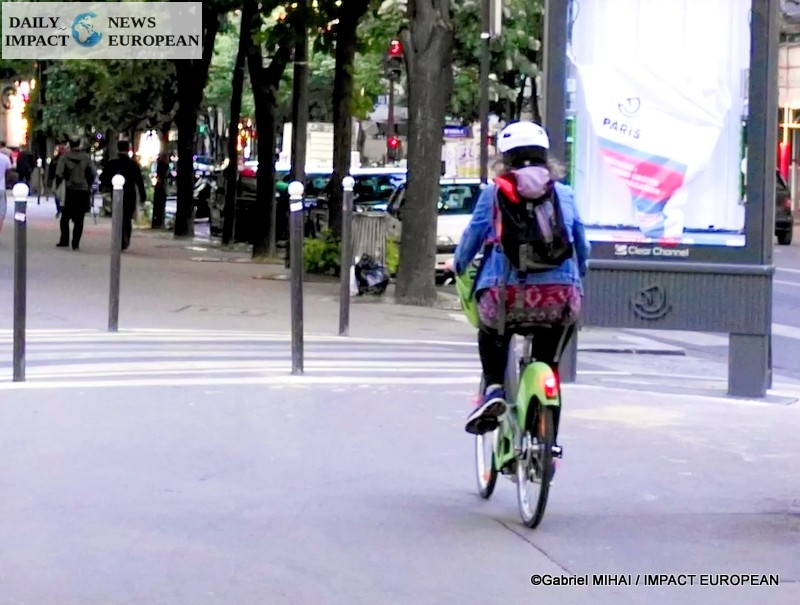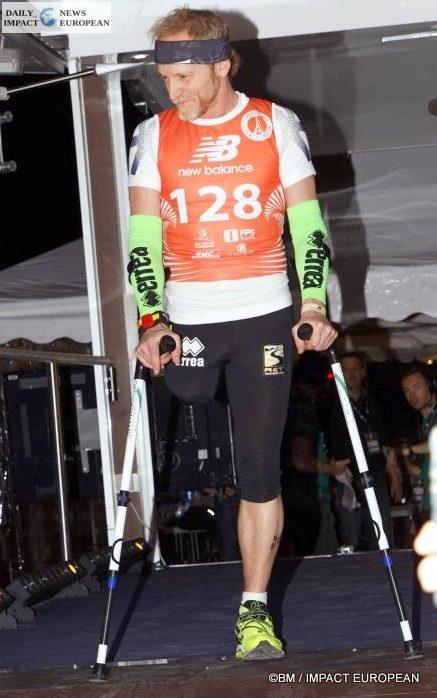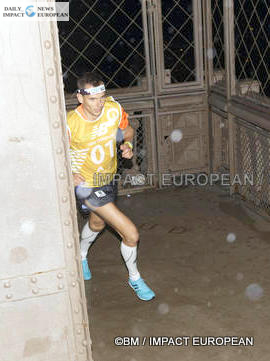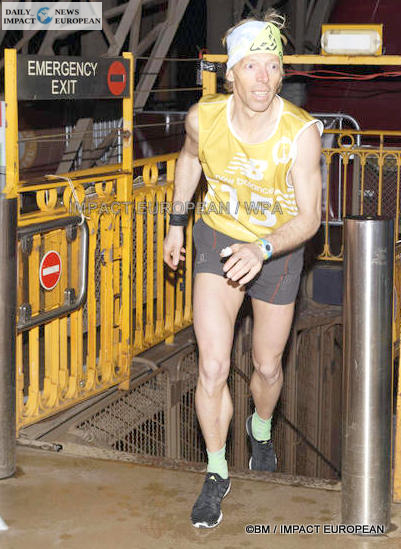There is now a consensus among scientists that recognizes four new meanings, still unknown: proprioception, balancing, thermoception and nociception.
Somesthesia. « It is a sensory system in its own right that coexists with the five senses and the sense of balance, linked to the functioning of the inner ear, » said Patrick Carroll, research director and somesthesia specialist at the Institut des Neurosciences de Montpellier.
Thus, the four internal senses to be added to the five external senses are thermoception, nociception, proprioception and balance-oception. Thermoception is the ability to feel temperatures, nociception allows to feel pain, proprioception (or kinesthesia) is the ability to locate our own members, and finally, balance-oception is the ability to maintain our balance. If these faculties are obvious to all, it is important to know that from now on, they are considered as full meaning.
Proprioception, sometimes called « kinesthesia », is part of the somesthesia. It is the sense that allows you to spot your own body in space. Thanks to nerve endings, the contraction of the muscles adjusts and keeps the body balanced at rest and motion. It is sometimes called « sixth sense », it is possible to improve it with certain physical exercises.
It uses proprioceptive receptors which send precise information at all times about the position of muscles, joints and bones. A contraction or relaxation order is sent back to maintain balance under most circumstances.
The results show active brain activity reacting to magnetic waves. Specifically, researchers would have observed a decrease in alpha waves, a brain reaction phenomenon that would have occurred a few hundred milliseconds after the shift in direction, the only variable factor in the experiment.
Its results would be proof that humans have receptors sensitive to the magnetic field like some animals. Magnetoreception would then be a « primary meaning » that goes back a long way in our evolutionary history.
This is certainly the additional meaning identified earlier. As early as 1906, the English physiologist Charles Sherrington proposed this term, which other scientists had qualified as « muscular sense » or « kinesthetic sense ». It refers to our ability to identify the location of our own members. « Proprioception is the ability that we have to detect the position of certain members of our body, specifies François Le Corre. For example when you want to open a door, you are going to have to open your hand in a certain way, to exercise a some strength, etc. This detection of proprioceptive information is only rarely conscious, and it is perhaps for this reason, moreover, that we have long ignored this meaning. »
A very specific area of our brain is dedicated to the processing of somesthetic information: the somatosensory cortex. « Experiments have shown that this cortex works like a map: each area of it is innervated by receptors from a particular surface of the body. And each one is all the greater as the sensitivity is important in the region of the body to which it is connected. For example, the fingertip, which contains a large number of somesthesic receptors, as well as the lips or genitals correspond to a large area at the level of the somesthesic cortex, ”Patrick Carroll further describes.
If this sensory system is so efficient, it is surely because it is the first to be implemented in our organism: when it is still in the womb of its mother, the fetus is able to react to mechanical pressures as soon as the eighth week, while it does not detect sounds until the sixteenth week. As for light stimulation, it does not respond until after birth. One of the reasons mentioned: the vitality of somesthesia. Because if we can survive without sight or smell, it would be impossible without knowing the position of our body in space. Finally, our sixth sense may be worthy of being the first.
In competitive sport, proprioceptive balance training plays an important role; it is a major ability to finely adjust movements and overall body position in various static or moving situations.
It is also a largely unconscious act essential in everyday life. Finally, it is a health prevention factor to prevent falls due to balance disorders in the elderly.
Perception can be intensified with exercises performed « blindly » (or partially). The disconnection of the visual sense triggers compensation via the proprioceptive system which activates more intensely and which directs attention to the perception of one’s own body. An indication indicates the exercises for which this variant is possible.
The perception of the environment takes place very early in humans and develops during the first years of life. Therefore, it is important to take into account this maturation period in children in our thinking and understand the issues involved.
The young blind child has several modalities, notably proprioceptive, tactile-kinesthetic and auditory which compensate for the lack of vision, but in a relative manner (Fraiberg, 1977). Touch remains, in fact, more limited than vision, which allows an apprehension of near and far space. Its perceptual field, much smaller than the visual field, and of a discontinuous nature (as opposed to the permanent visual flow), cannot hold the same organizing function of tone and posture. The tactile-kinesthetic modality, poorly suited to the perception of movements, is moreover slower than vision and the storage of data in memory more fragile than that of visual data. Finally, remember that hearing and grasping are coordinated later than vision and grasping (Fraiberg, op. Cit.). How, then, does the very young deprived of vision perceive and construct their environment? We draw inspiration here in particular from the work of Hatwell (1986, 1999, 2003) whose approach to the development of the blind child is based on clinical observation taking into account the heterogeneity of the profiles of this population (situations where blindness occurs early or late, those where it is total or partial).
Thanks, this time to the bodily INTEGRITY mechanoreceptors, called Somesthesia.
They are of two functional types:
Internal globals, those of OWNERSHIP [for internal pressures (direct, stretching, puckering); for internal friction and circulation; for internal temperatures and their inflammatory difference between living in contact];
And the Internal Relatives, those of KINESTHESIA [for the relative positioning of our structures; for tissue accelerations between organs, induced or suffered; for the energy of the organic activities released].
Blind people have a particular need for talk about kinesthetic and proprioceptive perceptions, but they are far from alone.
The denomination occupies a preponderant place in the development of tactile knowledge and know-how: it makes it possible to identify stimuli, to facilitate memory encoding (essential vector during the recall and subsequent recognition of touch) and to transmit this information which will have been previously memorized. Obviously, the more the tactile attention will be used, the more the lexicon will be rich and extensive.
Alcohol disrupts the sense of proprioception. This is why the constabulary may ask you, during a roadside check, to close your eyes and then touch your nose.
Proprioception can also be altered by seizures, migraine, or age (growth, presbypropriate). Certain forms of Elher-Danlos syndrome are associated with advanced and permanent loss of proprioception.
Attention, the balance as we define it through the work of proprioception is to be designed in addition to the 2 other parameters of balance that are the vestibular system (inner ear) and vision.
What are the benefits of proprioception?
– It allows you to control your posture and movements.
– It allows you to rebalance more easily in the event of a slip.
– It works the myotatic reflex (causes a muscular reflex reaction to catch an imbalanced person).
– It prevents the control deficit of the body in static as in movement.
– It helps prevent injuries.
– It allows you to learn how to place your body when lifting heavy loads.
– It allows you to have a better knowledge of your posture.
– It allows you to have better self-knowledge.
– It strengthens the inner balance.
– It improves neuromuscular connections.
– It improves positions.
Proprioception: reminders
With the exception of people whose sensitivity is impaired (people with disabilities, people with neurological or psychiatric disorders …), it is possible to represent the positions of our own joints mentally without having to visually check them. It is possible but more difficult to represent with precision our own articular movements and even more the speeds of these movements… It is however essential in most sports, especially since they are acrobatic and they require great precision (gymnastics, martial arts, combat sports, team sports, shooting…).
To perform gestural techniques at best, expert practitioners rely more on internal information and benchmarks than novices. The latter adjust their movements by relying more on information taken from the environment.
Proprioception and body diagram
The mental representations of our own positions, movements, joint speeds and their variations, are updated in particular by proprioceptive information. This is possible thanks to the nervous sensitivity inherent in muscles, joints, bones and ligaments.
This « sixth sense » allows us to represent ourselves, statically and during movements, the position of the body segments in relation to each other and the joint angulations: that is to say, to constantly update the representation mental or idea that we have of our posture. This mental representation is called a body diagram.
Proprioception is the source of coordination and skill. These two qualities form the basis of motor skills.
Proprioception and acquisition of motor skills
This sensitivity can be exercised and even very sharpened by training. This work can be organized in three phases:
1.We will first aim at acquiring a register of simple gestural techniques: from the reproduction of the form of movement to adjustments based on proprioceptive information.
2.Once the practitioner is able to reproduce these gestural techniques slowly but correctly, constraints of speed of execution and then of power may be introduced (movements, throws, strokes in combat sports, sequence).
3.Finally, the practitioner can seek to reproduce these techniques in an environment which is increasingly rich in uncertainties: to the constraints of speed and force, there will be added constraints of balance or even taking acrobatic risks.
Thus, the practitioner will have to carry out tasks in stable environments then more and more stimulating and in particular unstable.
Proprioception therefore plays a major role in controlling balance, but also in adjusting technical gestures. The acquisition and even more the expert mastery of these gestural techniques involve controlling movement from internal benchmarks.
Maintaining balance in the bipodal position and organizing motor responses to imbalance are underpinned by a complex device involving various afferents (in the foreground: neuro-muscular, labyrinthine and visual) and automatic central regulation.
THE AGING OF OWNERSHIP
The aging of proprioception is above all that of the peripheral nerves carrying information from receptors to integrating centers.
Morphological studies have shown that the most representative anomalies of this aging are as follows:
Irregularities in internodal distances, the origin of which is the combined result of segmental demyelination and remyelination.
Chronic axonal lesions involving myelinated and amyelinic fibers.
Segmental demyelination lesions predominant on large fibers.
The origin of these aging lesions remains disputed but several arguments plead in favor of modifications of vascular origin, in particular the correlation between the reduction of large myelinated fibers and the importance of the stenosis of vasa vasorum.
At the clinical level, these modifications will result in the elderly subject, in the absence of characterized neuropathy, by a reduction in vibratory and discriminative sensitivity while neurophysiological explorations show a reduction in nerve conduction speeds after 60 years.
Several protocols have been proposed in order to characterize the aging of postural control, depending on the case, static, dynamic posturography or more sophisticated experimental paradigms.
The stabilometric study explores the static balance on a force platform under conditions of normalized collection and surroundings.
Aging is characterized by an increase in postural oscillations that can be compared to the loss of discriminative sensitivity in the feet without this relationship being exclusive of any other parameter.
The most characteristic element is the importance assumed during aging by visual afferents, which is characterized by an increase in the Romberg coefficient (ratio of closed eye / open eye oscillations). Under these conditions, the elderly subject « clings » to his visual afferents, more than to other afferents, proprioceptive or vestibular.
Dynamic equilibrium can be explored on a mobile platform which makes it possible to subject the subject to an anteroposterior displacement or to a rotation of the support and to record the strategies involved when maintaining equilibrium from electromyographic data or cutscenes.
Balance control does not only require stability control but also the ability to initialize the step when the imbalance cannot be corrected by bipodal support. In recent years, original protocols have been developed to study these posturo-locomotor capacities.
Elderly people develop proprioceptive afferents during aging, participating in the regulation of the balance of strategies aiming at a privileged treatment from other afferents, in particular visual and vestibular.
This is an adaptation mechanism to physiological aging which will be even more contributing in the case of characterized neurological pathologies such as peripheral neuropathies.
Share this content:






Plus d'histoires
December 1 – World AIDS Day
Blagnac: « A Night for 2,500 Voices » – to Support Sick Children
Anti-Fur Demonstration by the SIPE Collective